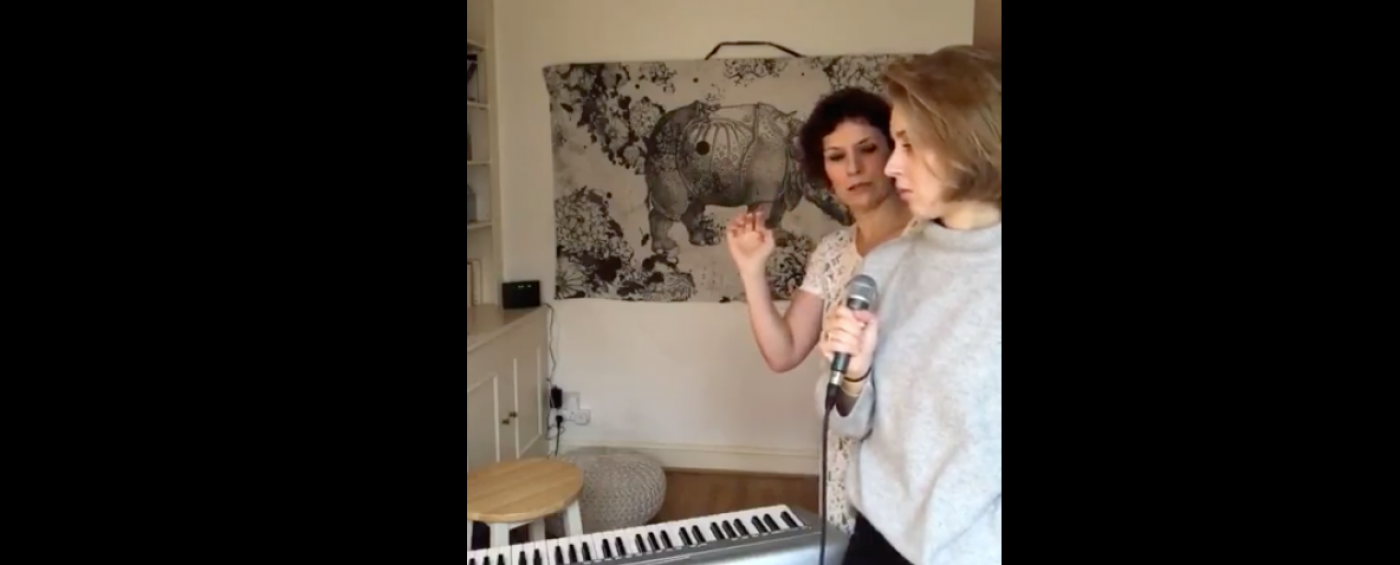Last week a voice teacher in a group of professional teachers I follow wrote a witty and brilliant post with a list of points he follows in its lessons. I wrote that all the ones from his point 2 are mine and this takes away all the other points but the last. The last was on having a perfectly clean bathroom, yeah everybody still in lockdown and online lessons.
What was his second point to take away every other one? He does not accept students who do not sing in pitch: and as him many others do, as those who not have yet a voice. He asked me about my answer and I told him that basically I have all the students out of pitch the others did not want, the singers who start losing their pitch or never solved it really and have by that some career problems and I have had also many teachers when they start losing something and they do not know what to do about. In my concept they have to be treated in the same way, because they have something in common and it is the main reason teachers historically do not accept them.
To explain that I do a little diversion: some decades ago, as teen, it was discovered I could bring back into balance horses got dangerous. I am a pretty serious soul and I spent then summers in Uk to perfect my training skills and also there they gave me school horses not happy with kids anymore, or with various stiffnesses inexplicable or after surgeries while I did refine the technique. What I thought was that I could use some movements that were typical of a happy and joyful situation to change the emotional state of the horse, so to destress him and take away the preventive fear, and open back to what they mostly love: playing and collaborate with us. Also the joyful and happy gesture will improve and condition muscles and muscular chains and patterns so to have them present in every moment more than before. The origin being a physical trauma or not skilled kids moving heavy on their back or a not respectful or violent or inappropriate trainer? If repeated with no other input they would go in burnout as we do. So I was just putting back functionality and reopening the thing horses love most doing with us.
Why do I talk about horses? The voice is a horse and reacts as a horse. So is the student the horse? Not exactly. The student or the singer is both the horse and me, meaning by that the one the horse live playing with. Why teachers do not want the kind of singers we said previously? Because they have a bad horse? Not exactly, they do not refuse the horse but something the person clearly have shown of not being able to do: they have a burnout horse. So again: is the horse?
Do you remember bullies at school? Were they fragile or strong kids? We well see they are kids with a huge energy that has taken a bad flip, we see and experiment them as fragile as violent. Violent, not aggressive; their energy is not well expressed and it becomes the frustration of it in burst of violence. When do they save themselves, they discover that this fantastic energy they have inside is a hell of a gift. Taking care of their burnout horse is easy and will give some fresh air and good vibe to the other part, the smell of what they can really be and have inside. They will then have to learn not to always escalate but reopening easiness for their horse and by that the dialogue and playing with the other players. They have to learn to restrain themselves not to act the bully actions, suspending them for a certain time and thus letting the place for other things.
If they do then they will be the singers ev’ry teacher and musician want, as many of my students or professional have become. It is not easy and sometimes really annoying, and as teacher you must not have a problem in being profoundly straight as profoundly respectful of the human inside and fond of his qualities, with the vibe of the admiration of the true soul you have in front, acting protecting the horse but not loving less the non horse of that person. How this: not teaching the person but teaching on focusing and freeing and respecting the horse, that at the end is what we call in music listening and playing. Because a happy horse is sign of a hell of a rider ;).
In the group I will only write of how to free technically the horse. Have a good weekend everybody.
















